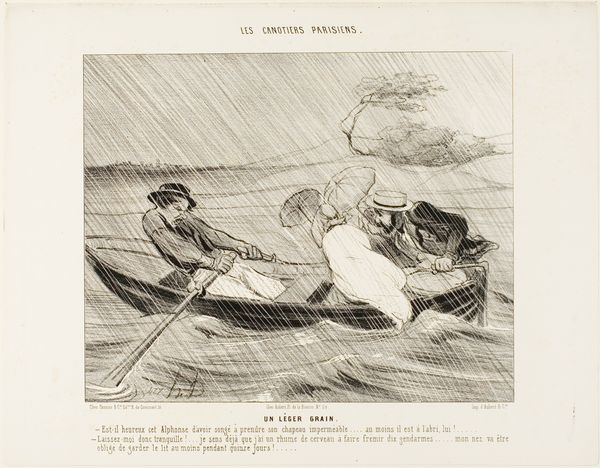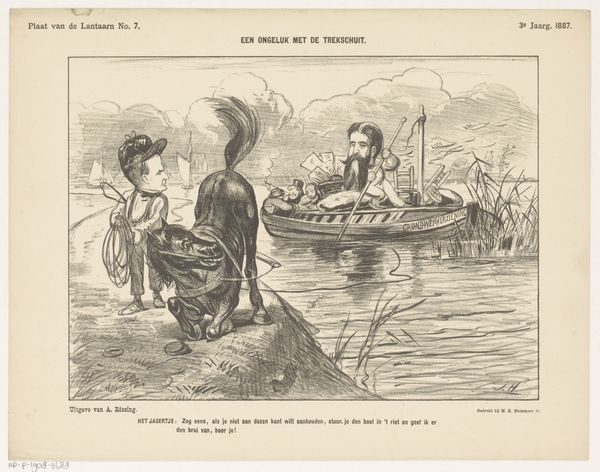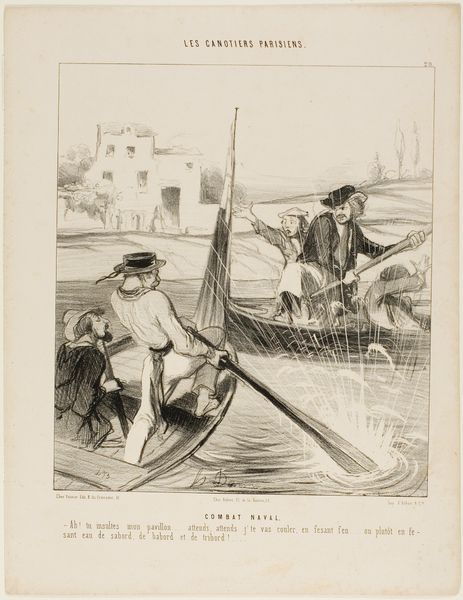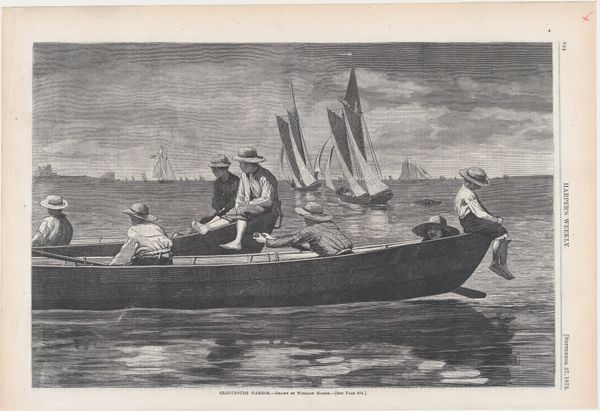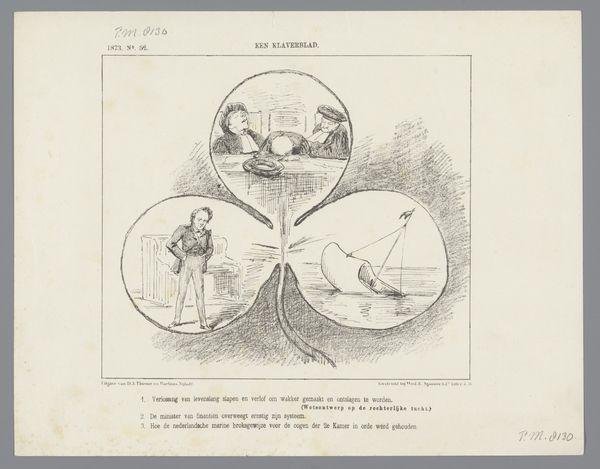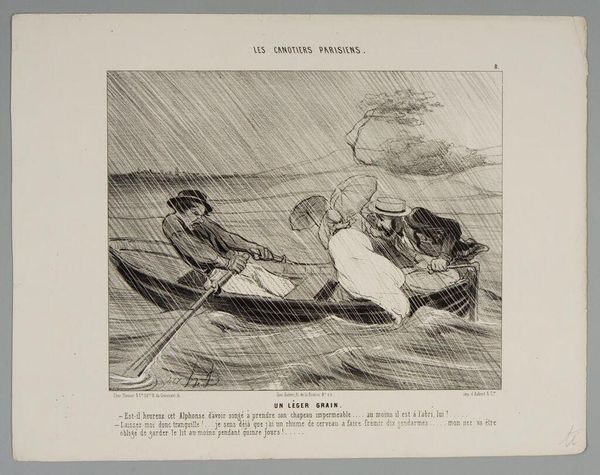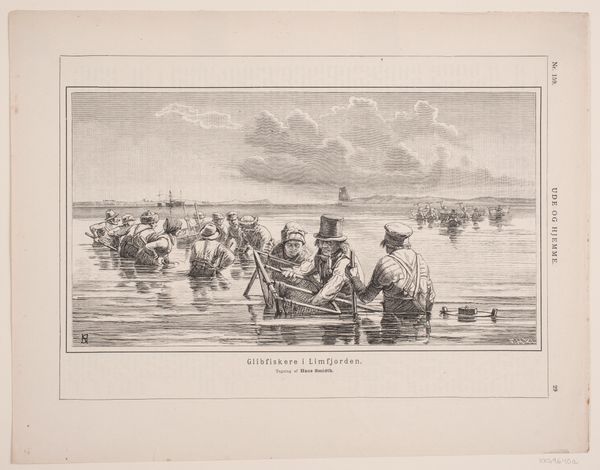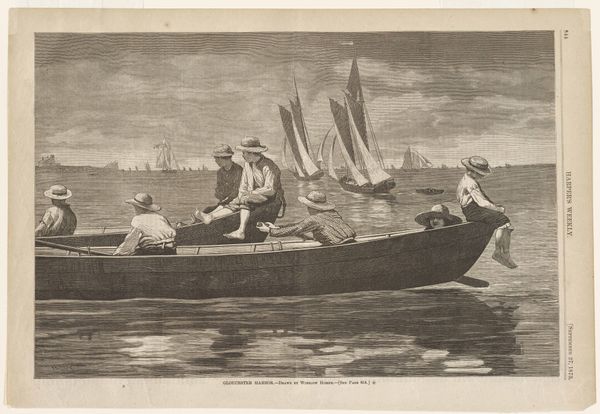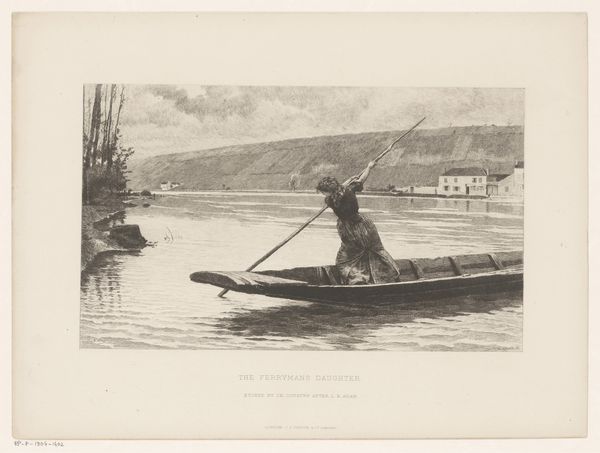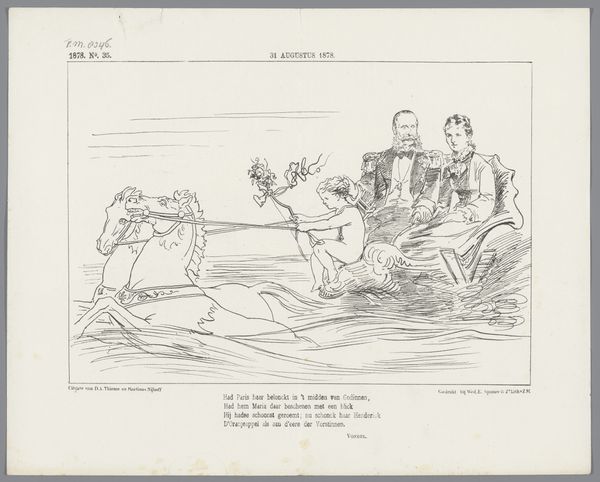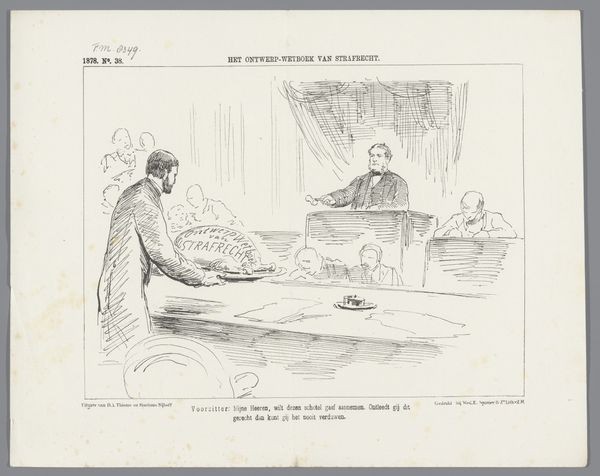
Spotprent op de samenstelling van de enquêtecommissie over de koopvaardijvloot, 1874 1874
0:00
0:00
drawing, ink, pen
#
drawing
#
16_19th-century
#
pen illustration
#
caricature
#
ink
#
pen
#
genre-painting
Dimensions: height 215 mm, width 275 mm
Copyright: Rijks Museum: Open Domain
Editor: This ink and pen drawing from 1874, by Johan Michaël Schmidt Crans, is titled "Spotprent op de samenstelling van de enquêtecommissie over de koopvaardijvloot, 1874". It looks like a political cartoon. I’m struck by how it seems to depict labor and bureaucracy together, everyone cramped in that little boat. What’s your perspective on the meaning conveyed by the artistic process and materials here? Curator: Well, given its creation through pen and ink—cheap and readily available materials for mass reproduction—we see the work primarily functioning as social commentary, distributed widely. The medium itself speaks to a concern with accessibility and public opinion. The cross-hatching technique, although standard for creating tone, here adds to the feeling of busyness, mirroring the congested political landscape of the time. Editor: So you're saying the cheapness of the materials emphasizes the artist’s intent to reach as many people as possible with the cartoon’s message? Curator: Exactly. Think about it: who was the audience for this work? Probably not wealthy art collectors. This piece engaged a broader public sphere, likely distributed through newspapers or pamphlets, which puts the work firmly in a space of political action and social critique, rather than ‘high art.’ And what is the division of labour that we can distinguish? Editor: It seems clear the men are crammed, shoulder to shoulder in this little boat! It brings attention to the sheer density of bodies... Curator: Precisely. The boat as a means of conveyance – not simply of goods and merchandise that define a merchant navy – but of human beings, of manpower. How does the image challenge established conceptions of labor and mobility? Editor: I see it now. The image is not just about these individual figures; it critiques a system of governance. Thinking about the materiality and mode of production really grounds the piece in its historical context and political purpose. Thanks! Curator: My pleasure. By analyzing the ‘how’ and ‘why’ of the work’s making, we get a richer understanding of its social impact.
Comments
No comments
Be the first to comment and join the conversation on the ultimate creative platform.
